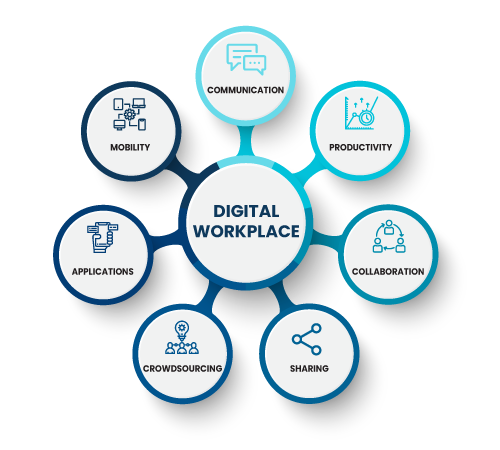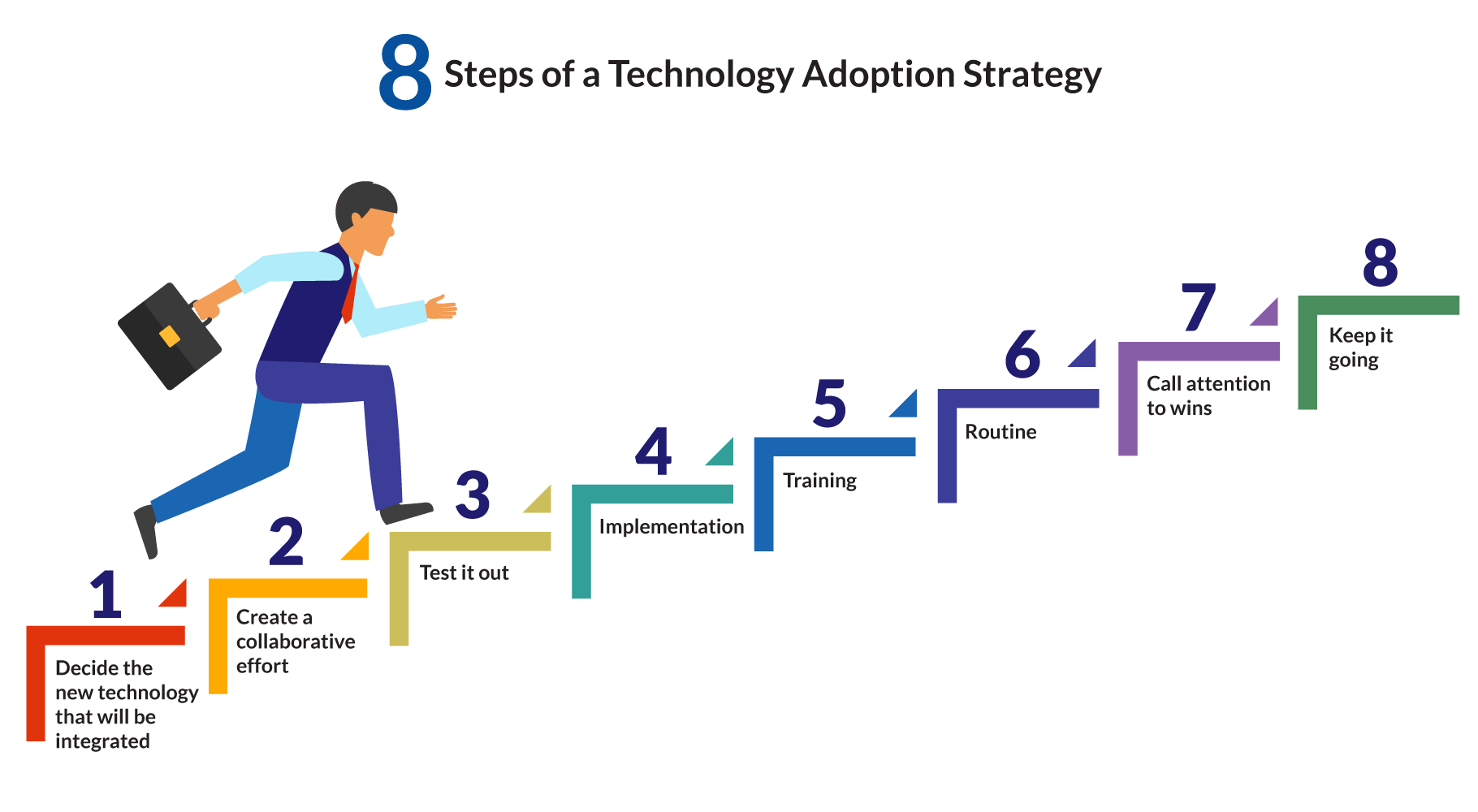
This article was first published on YourStory
Companies in the new age digital workplace are constantly evolving due to our fast-paced business environment. Change is inevitable; a company has to be able to adopt new technologies and get its employees assimilated with them in order to stay competitive.
An organization’s survival is dependent on the adoption of digital technologies. There are various tools and strategies to facilitate this.
Let’s dig deeper to understand this better!
Digital Workplace Technologies
With its rapid evolution, technology has become crucial to the success of businesses in the current competitive environment. Any business today that requires its employees to be in the same place at the same time together needs to have the digital capability to achieve that.
Also Read: Digital Leadership in a New Era and How Workplace Culture Matters More Than Ever
What is a digital workplace?
It is essentially multiple workplace technologies connected by a network to create a singular environment for employees to collaborate.

A digital workplace enables better communication and higher productivity due to easier access to sharing through applications and the facilitation of collaboration; setting it up involves the adoption of multiple digital technologies in areas of communication and collaboration (Slack, Teams, Zoom, etc.), productivity (Trello, AirTable, etc.), and applications (No-code Platforms like Quixy).
Several industry statistics highlight the need and importance of a digital workplace:
- A study by MIT has shown that 78% of executives believe that digital transformation is imperative for a company’s survival.
- 63% find the rate at which this transformation is occurring to be very slow.
- There has been a 30% reduction in occupancy costs in companies that have made an active effort to cultivate the digital transformation of the workplace.
Also read: Digital Workplace – All You Need to Know
It is, therefore, important for employees to adopt and integrate new technologies and create a digital workplace. With COVID-19 disrupting regular business practices this year, it has become exceedingly essential and a requirement for a business to function.
This is much easier said than done. Since the employees may not be tech-savvy or may resist change, implementing this is difficult and needs to be addressed.
It is important for employees to adopt and integrate new technologies and create a digital workplace.
This is much easier said than done. Since the employees may not be tech-savvy or may resist change, the implementation of this is difficult and that needs to be addressed.
How to encourage technology adoption to create a digital workplace?
An organization’s biggest mistake is not planning the adoption of new technology. Employees cannot be expected to seamlessly integrate technology into their working processes.
Here are a few pointers to assist the process:

1. Convey the message
Employees should be informed of the change and why it is occurring so as not to frustrate them. By implementing such a change, the favorable impact on the achievement of organizational objectives should be communicated to the employees.
2. Proper training
Employees cannot function without clarity. They need to be taught how to use the new technology to aid their workflow rather than cause issues.
3. Receive feedback
It is important to be open to receiving feedback. Positive and negative feedback result from engagement, and employees will only learn if they engage. Listen to their concerns and suggestions about the new technology and teach them how to use it accordingly.
4. Innovation
New technology encourages innovation and speeds up work processes. Employees need to be for innovation and not against it. Mechanisms to encourage this should be kept in place.
Employees need to be for innovation and not against it.
Steps of a Technology Adoption Strategy
How can you facilitate the adoption of new technology and create a collaborative and meaningful digital workplace for the betterment of your business and your employees? Here are the steps to

1. Decide the new technology that will be integrated
There has to be research behind the new technology your business integrates into its workflow processes; it has to add value to your business and be useful to your employees. The new technology should cater to these requirements:
- Solves a specific problem that is the need of the hour
- Gives you a competitive advantage
- Implementation would be beneficial and worth the costs
2. Create a collaborative effort
Ask for input from your employees. Make them part of the decision-making. The way you sell the need for the new technology makes a great difference in how your employees accept it.
While technology might generate better results, your employees’ attitude toward it depends on their motivation and morale. Therefore, making them part of the game before playing it is crucial.
Three requirements here are:
- An internal sponsor to ensure the resource requirements are met
- A project manager to oversee the details of the administration
- An integrator to manage priorities that may conflict
3. Test it out
Before completely rolling out the new technology, it is important to test it out and see if there is any trouble in its implementation. This could be treated as sort of a pilot program – once the demonstration becomes smooth with all the hindrances ironed out, the technology would be ready for implementation.
4. Implementation
This is the most imperative step in the process. The implementation of the technology needs to be made as smooth as possible in order to assimilate it naturally in the digital workplace.
This can be done on the basis of the diffusion of the innovation curve, which categorizes people into five groups according to how strongly they would want to adopt new technology.
By understanding different perspectives, innovation can be made smoother.
- Innovators – These employees are completely for change; they should be given access to the new software first. They are highly motivated to find new ways to complete their work.
- Early Adopters – They show interest but not the same amount of inclination as the innovators. Their interest can be peaked with focus groups and explaining the new technology to them well, taking their feedback and suggestions.
- Early Majority – These are believers who will hop on the new technology when it arrives.
- Late Majority – These are doubters who will resist change until they have proof that it works with all their doubts solved.
- Laggards – This category of people has to be pushed into using the new technology and are generally complainers about issues and errors that arise with it.
5. Training
Use different training materials to get your employees completely accustomed to the new technologies, and create and evaluate assessments to ensure that they understand them well.
Not all new technology is easy to understand and use; some software requires extensive training. Keep in mind that there are different types of learners. Howard Gardner’s Seven Learning Styles explains this well.
Things to remember:
- Tailor it according to the types of learners your employees are
- give a personal approach to training; one-on-one is always helpful
- take feedback constructively
6. Routine
After the technology is integrated into the digital workplace, it is important to make it a routine out of it for the employees. Institutionalization is essential.
- The early adopters should be leveraged here to influence the others.
- Help people who are struggling with personal attention
- Reward employees who are working well
- Encourage feedback
7. Call attention to wins
Magnify the positive impact of the new technology on the organizations working. Employees will be motivated to perform like their successful peers if they are incentivized to work well.
Emphasize the gains and work on the setbacks. Leverage marketing departments and account managers wherever possible.
8. Keep it going
Keep moving forward, and keep updating. Technology projects are seen by most companies as a short-term endeavor, not as a going concern.
Focus on the outcomes and objectives you have set, strive to preserve your timetable, but accept it and pivot if not everything goes to plan. This is a ride on the road with several twists and turns, and you have to be prepared to roll with the punches. Shift, new iterations, and optimization would likely involve your strategy.
Persuading skeptical employees to adopt change
There are always a few employees who may be highly resistant to change. These skeptics can be dealt with with a few principles to keep in mind with regard to this.
- Show the employees how having a digital workplace would be beneficial to their jobs
- Reward work well done; punish as a last resort
- Assimilate new technology as a routine in the workplace
- Do not choose a technology that is tough to understand and use
- Get influential employees to make an impact on the others
Increase the adoption of technology
In the end, there has to be an increase in the adoption of technology in order for a company to survive. Growth is highly dependent on innovation.
The competitive market environment makes it very difficult for companies to stay relevant. The new technology being adopted today is Artificial Intelligence, Low-code No-code, Machine Learning, etc., to facilitate a digital workplace.
Conclusion
With the recent pandemic, the so-called “new normal” makes creating and maintaining a digital workplace all the more essential. New technology can be assimilated easily with the help of platforms that facilitate their integration into companies.
Quixy is a low-code no-code platform that aids in workflow automation and enriches the business’s metrics along with the employees’ lives with a convenient visual interface and drag-and-drop system. Get Started Today! Empower your organization with automation and customized app development without coding.
Login
Please login to comment
0 Comments
Oldest
















